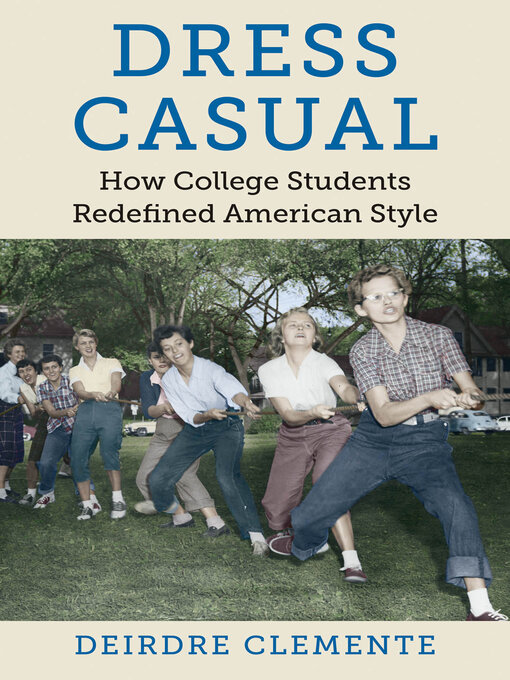-
Description
-
Details
-
Reviews
The pace of change in fashion options, however, was hardly equal. Race, class, and gender shaped the adoption of casual style, and young women faced particular backlash both from older generations and from their male peers. Nevertheless, as coeds fought dress codes and stereotypes, they joined men in pushing new styles beyond the campus, into dance halls, theaters, homes, and workplaces. Thanks to these shifts, today's casual style provides a middle ground for people of all backgrounds, redefining the meaning of appearance in American culture.

Kindle Book
- ISBN: 9781469614083
- Release date: April 15, 2014
OverDrive Read
- ISBN: 9781469615479
- File size: 6585 KB
- Release date: April 15, 2014
EPUB ebook
- ISBN: 9781469615479
- File size: 5010 KB
- Release date: April 15, 2014

Loading
The pace of change in fashion options, however, was hardly equal. Race, class, and gender shaped the adoption of casual style, and young women faced particular backlash both from older generations and from their male peers. Nevertheless, as coeds fought dress codes and stereotypes, they joined men in pushing new styles beyond the campus, into dance halls, theaters, homes, and workplaces. Thanks to these shifts, today's casual style provides a middle ground for people of all backgrounds, redefining the meaning of appearance in American culture.

-
Details
Publisher:
The University of North Carolina Press
Kindle Book
ISBN: 9781469614083
Release date: April 15, 2014
OverDrive Read
ISBN: 9781469615479
File size: 6585 KB
Release date: April 15, 2014
EPUB ebook
ISBN: 9781469615479
File size: 5010 KB
Release date: April 15, 2014
-
Creators
- Deirdre Clemente - Author
-
Formats
Kindle Book
OverDrive Read
EPUB ebook
-
Languages
English
-
Reviews

Loading
Why is availability limited?
×Availability can change throughout the month based on the library's budget. You can still place a hold on the title, and your hold will be automatically filled as soon as the title is available again.
The Kindle Book format for this title is not supported on:
×Read-along ebook
×The OverDrive Read format of this ebook has professional narration that plays while you read in your browser. Learn more here.
